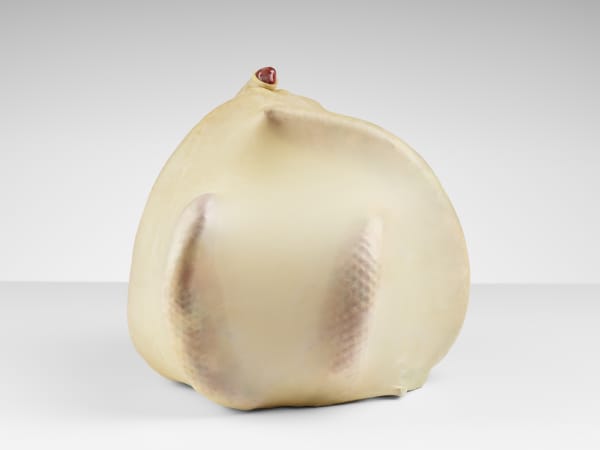LIMINAL STATES: HANNA-MARIA HAMMARI, AGATA INGARDEN, CATHY JOSEFOWITZ, KYUNG-ME, TAU LEWIS, MAINA-MIRIAM MUNSKY
-

TAU LEWIS, CATHY JOSEFOWITZ
exhibition view, Liminal States, Kraupa-Tuskany Zeidler, Berlin 2019-2020 -

CATHY JOSEFOWITZ
exhibition view, Liminal States, Kraupa-Tuskany Zeidler, Berlin 2019-2020 -

AGATA INGARDEN, HANNA-MARIA HAMMARI
exhibition view, Liminal States, Kraupa-Tuskany Zeidler, Berlin 2019-2020 -

KYUNG-ME, HANNA-MARIA HAMMARI, MAINA-MIRIAM MUNSKY
exhibition view, Liminal States, Kraupa-Tuskany Zeidler, Berlin 2019-2020
-

KYUNG-ME, TAU LEWIS
exhibition view, Liminal States, Kraupa-Tuskany Zeidler, Berlin 2019-2020 -

MIRIAM MANIA MUNSKY, HANNA MARIA HAMMARI
exhibition view, Liminal States, Kraupa-Tuskany Zeidler, Berlin 2019-2020 -

MIRIAM MANIA MUNSKY, HANNA MARIA HAMMARI
exhibition view, Liminal States, Kraupa-Tuskany Zeidler, Berlin 2019-2020
-
 Agata Ingarden, The Screen, 2018
Agata Ingarden, The Screen, 2018 -
 Cathy Josefowitz, Sans titre, 1979
Cathy Josefowitz, Sans titre, 1979 -
 Cathy Josefowitz, Sans titre, 1979
Cathy Josefowitz, Sans titre, 1979 -
 Cathy Josefowitz, Sans titre, 1980
Cathy Josefowitz, Sans titre, 1980 -
 Kyung-Me, Copy Kitty, 2017
Kyung-Me, Copy Kitty, 2017 -
 Kyung-Me, Copy Kitty, 2017
Kyung-Me, Copy Kitty, 2017 -
 Tau Lewis, Devil Ray, 2019
Tau Lewis, Devil Ray, 2019 -
 Maina-Miriam Munsky, Fertilität IV, 1967
Maina-Miriam Munsky, Fertilität IV, 1967 -
 Maina-Miriam Munsky, Geburt III, 1967
Maina-Miriam Munsky, Geburt III, 1967 -
 Maina-Miriam Munsky, Nach London Fahren, 1975
Maina-Miriam Munsky, Nach London Fahren, 1975 -
 Hanna-Maria Hammari, Untitled, 2019
Hanna-Maria Hammari, Untitled, 2019 -
 Hanna-Maria Hammari, Untitled, 2019
Hanna-Maria Hammari, Untitled, 2019 -
 Hanna-Maria Hammari, Untitled, 2019
Hanna-Maria Hammari, Untitled, 2019 -
 Hanna-Maria Hammari, Untitled, 2019
Hanna-Maria Hammari, Untitled, 2019 -
 Hanna-Maria Hammari, Untitled, 2019
Hanna-Maria Hammari, Untitled, 2019 -
 Hanna-Maria Hammari, Untitled, 2019
Hanna-Maria Hammari, Untitled, 2019 -
 Hanna-Maria Hammari, Untitled, 2019
Hanna-Maria Hammari, Untitled, 2019
We tend to think our minds are in control of our corporeal selves, but the body breathes without our consent or cooperation. We’re always with, and inseparable from, our bodies. Its permeable form sometimes makes it difficult to identify its boundaries, where cognition is extended beyond the physique. The fear of the wound (trauma) reminds us both how our bodies contain and our minds betray us. In ‘Liminal States’, four contemporary and two historical artistic positions trace different topographies of the self and its(post)corporeal manifestations.
Maina-Miriam Munsky’s ‘Nach London Fahren’, 1975 is a still image based on a photo taken by the artist: a painfully clinical depiction of a limp female body on a hospital operating table at the doctor’s mercy. On the composite canvases of ‘Fertiliät IV’, 1967 and ‘Geburt III’, 1967 the light rose and yellow embryonic shapes foreshadow the immemorial vigor through which a body separates from another in order to become. Munsky’s early works reinforce a boundary between I and m/Other.
The coiling tentacles of Hanna-Maria Hammari’s ceramics caught in tightly stretched latex dig deep into our ambiguous feelings towards the flesh. Another set of ceramic sculptures intensifies the psychic tension, leaving uncertain whether they are designed to protect or harm the body. Their solid metal-like appearance stands in stark contrast with the inherent fragility of the glazed ceramic material.
The bold figurative pastel drawings from 1979–1981 by Cathy Josefowitz scrutinize the body in motion. Echoing her work as a dancer and choreographer, the hybrid bodies display themselves in struggle and ease, punctuated by colored marks. By using body language as her painterly vocabulary, Josefowitz releases an almost uncanny strength and confidence that lies in extending the self to the multiple and the strange.
Tau Lewis’ sculpture ‘devil ray’ floats gracefully, with winglike fins, over the floor. Its body is a quilted assemblage of textiles, resembling a portrait of the tropical waters it may have once inhabited. The ray’s humanoid face is carved out of plaster and has a strange aura, like a totem, standing in for a social body rather than an individual one. Drawing on the tradition of freedom quilts, Lewis overcomes the idea of portraiture to embody a collective identity.
Kyung-Me’s intricate graphite drawings in the autobiographical series ‘Copy Kitty’ explore the capricious qualities of obsessive romantic relationships. Like the protagonists in Kristen Roupenian’s controversial short story ‘Cat Person’ from 2017, the figure displays ambiguous, paranoid yet earnest feelings of infatuation. Set in outlandish scenes, ‘Copy Kitty’ encounters the gaze of the lover and its own reflection in the mirror, recognizing itself as alien.
Agata Ingarden’s work explores the relationship between personal experience and a shared understanding of how the world is perceived. Memories are never just a recollection of something but also always of somebody. ‘The Screen’ – ‘the retina of the mind’s eye’ – receives and converts the signals from the outside world to be processed by our brains and digested by our bodies. Crystallized salt settles on the acoustic foam of ‘The Screen’, absorbing and preserving sensations. Sticky butterfly wings tremble gently–like the skin that forms on the surface of warm milk.
























